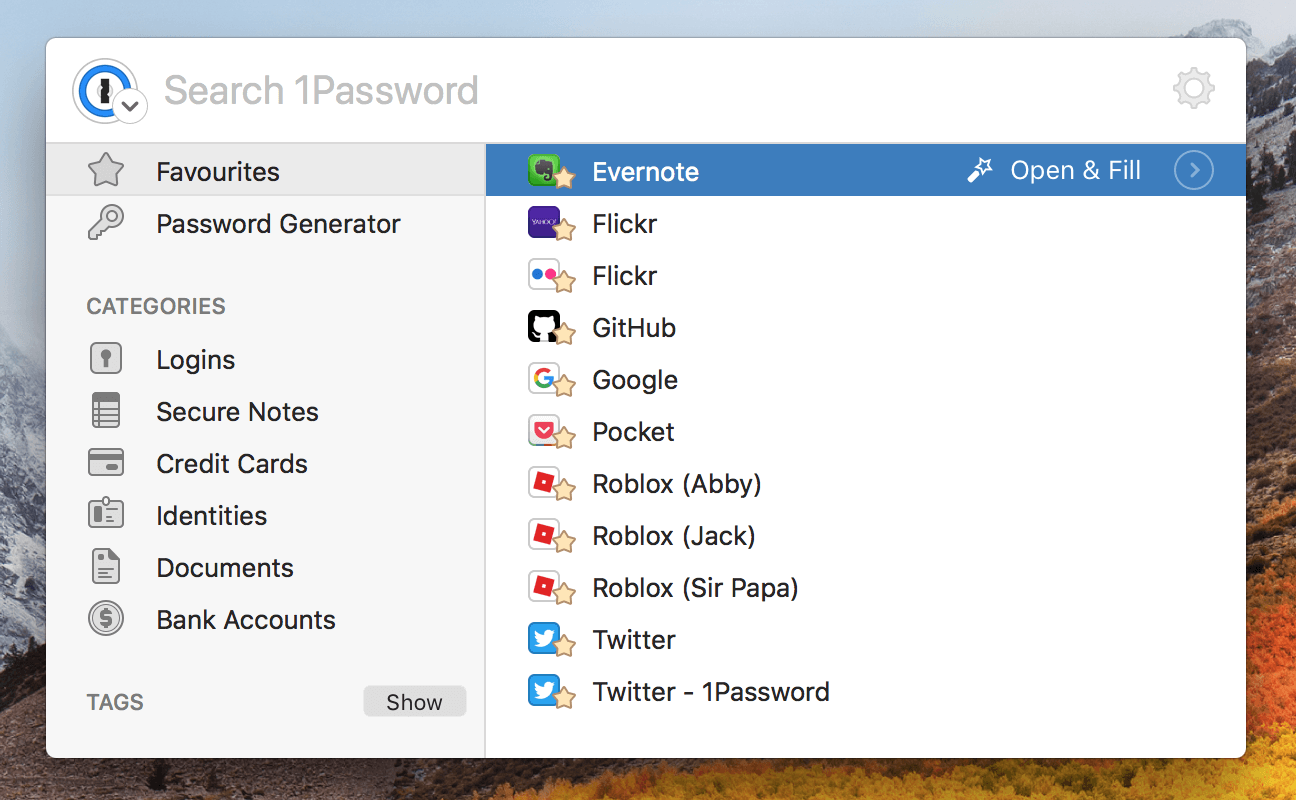- 1password 7 Chrome Extension
- 1password 7 Chrome Extension
- 1password 7 Chrome Extension Not Working
- 1password 7 Chrome Extension
- 1password 7 Chrome Download
When you have a 1Password membership, you can access your data everywhere you need it. Any changes you make on one device are immediately available everywhere else.
There’s no limit to the number of devices where you can use 1Password. Install it on all your computers and mobile devices to always have your information with you. After everything is in sync, it’ll be available even if you need to go offline for a bit.
In the question“What are the best online password managers?” 1Password is ranked 4th while Chrome is ranked 17th. The most important reason people chose 1Password is: An iteration on the UI brings a polished look that was already good-looking to begin with. It even tries pulling in relevant app and web icons, adds credit cards logos and has. The original 1Password browser extension is reliant upon the main app as well as a means for communication with it, which results in one (the app or the extension) being able to lock and unlock the other. 1Password X, on the other hand, is a full featured 1Password extension (for Chrome and Firefox) that can be used without a connection to the.
To get started, sign in to your 1Password account:
Get 1Password in your browser
1Password works everywhere you do. Easily sign in to sites, use suggested passwords, and find what you need. Everything is available at your fingertips. Get 1Password for:
I’m not from AgileBits, but I do know that 1Password never fills passwords completely automatically as a security feature. If you’re using 1Password X (probably the way to go for Chrome and Firefox), you can get pretty darn close to full auto filling with just a little user input required. Open a browser tab in Google Chrome on your desktop. Go to the Chrome Store page for the 1Password extension. Click on 'Add to Chrome'. When prompted to approve access, just click on 'Add Extension'.
If you’re using Safari, get to know 1Password for Safari.
Get the 1Password apps
1Password is available for all your computers, tablets, and phones, so you can manage your passwords, credit cards, secure notes, and more – wherever you are.
Next steps

- Get to know 1Password for Mac, iOS, Windows, and Android
Help
Don’t have a 1Password membership? Try one free. After you have your new account, move your existing 1Password data to it.
About the message
1Password 6.8 for Mac introduced a more reliable method for saving and filling in browsers called native messaging.
Native messaging improves the performance and reliability of the 1Password classic extension, especially when proxies, antivirus, and other security software would otherwise interfere with 1Password. If 1Password is unable to detect support for native messaging in your browser, you’ll see this message.
What you should do
For all browsers
First, try restarting your browser. If you’re still having trouble, follow these steps to allow 1Password to use native messaging in your browser:
Open Terminal, which is in the Utilities folder of your Applications folder.
Copy and paste the following command and press Return:
Open 1Password. Hold down the Control and Option keys on your keyboard and choose 1Password > Quit 1Password Completely from the menu bar.
Open 1Password again.
Restart your browser.
Follow the additional steps below if you use Brave, Vivaldi, or Chrome Canary.
If you use Brave
If you use Brave, make sure you’re using Brave 0.17.19 or later. Earlier versions do not have support for native messaging.
1password 7 Chrome Extension
Using 1Password in Brave requires 1Password 7 or later.
1password 7 Chrome Extension
If you use Vivaldi
If you use Vivaldi, make sure you’re using Vivaldi 1.11.917.43 or later. Earlier versions do not have support for native messaging.
If you use Chrome Canary or Microsoft Edge
1password 7 Chrome Extension Not Working
If you use Chrome Canary, follow these steps to allow 1Password to use native messaging in your browser:
Make sure the 1Password app and your browser are both in the Applications folder.
In Finder, choose Go > Go to Folder. Copy and paste the following path and press Return:
Copy the file named
2bua8c4s2c.com.agilebits.1password.jsonto your desktop.Choose Go > Go to Folder. Copy and paste the correct path for your browser and press Return:
- Google Chrome Beta:
~/Library/Application Support/Google/Chrome Beta/ - Google Chrome Dev:
~/Library/Application Support/Google/Chrome Dev/ - Google Chrome Canary:
~/Library/Application Support/Google/Chrome Canary/ - Microsoft Edge Beta:
~/Library/Application Support/Microsoft Edge Beta/ - Microsoft Edge Dev:
~/Library/Application Support/Microsoft Edge Dev/ - Microsoft Edge Canary:
~/Library/Application Support/Microsoft Edge Canary/
- Google Chrome Beta:
Open the folder
NativeMessagingHostsor create it if it doesn’t exist.Drag the file named
2bua8c4s2c.com.agilebits.1password.jsonfrom your desktop into theNativeMessagingHostsfolder.Restart your browser.

1password 7 Chrome Extension
Get more help
1password 7 Chrome Download
Maschine mikro software download mac free. If you’re still having trouble:
- Create a diagnostics report on your Mac.
- Contact 1Password Support with a description of the problem and attach the diagnostics report that you created.
